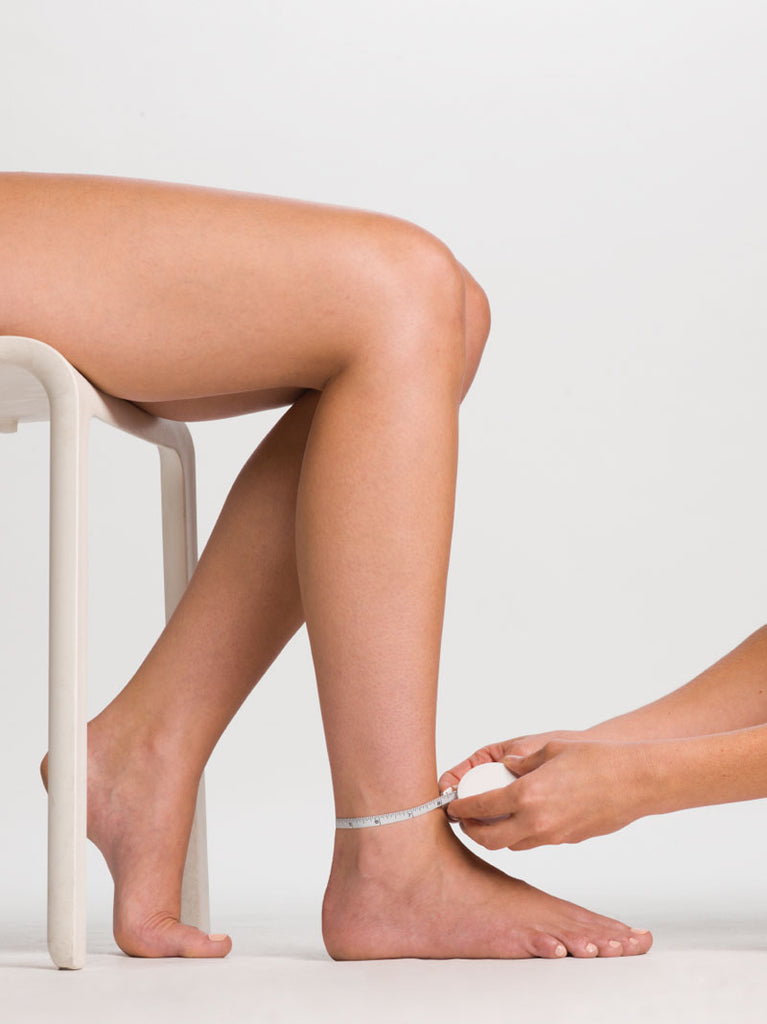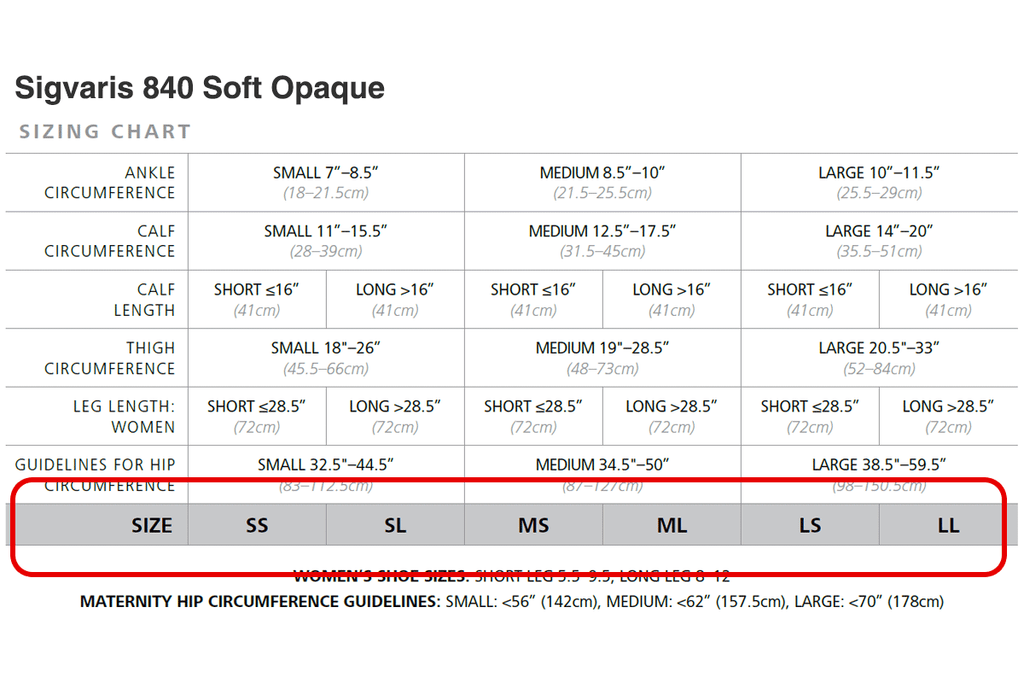Finding the Right Size for your Compression Sock
It's easy to measure your legs to get the right size for compression socks. Follow this easy guide for all the information you need.
Knee high Measurements
1. Ankle circumference: Measure the narrowest part above the ankle bone.

2. Calf circumference: Measure the fullest part of your calf.

3. Calf length: Measure from floor up to the bend of the knee.

Pantyhose and Thigh high Measurements
4. Thigh circumference: Measure at the widest part of thigh at the top.

5. Thigh length: Measure from the floor up to the gluteal fold (inseam measurement).

6. Hip circumference: Measure the widest part of the hip. (Used for pantyhose only)

It's also helpful to note your Shoe Size and Height
Our compression socks for men and sports have larger shoe size options available. These are great options if you want comfort in your toes.
Height plays a role in the length of the leg and is a good way to check if your length measurements are consistent with your height. For example: If you're 5' 2" and your calf length measurement is 18 inches, consider double checking your length measurements.
Pro Tips for Measuring
1. measurements should always be taken as soon as possible waking when swelling is minimum. First thing in the morning is a good idea.
2. Measure next to the skin, not over bulky clothing.
3. Measure with the foot flat on the floor and with the leg bent at a right angle. (Have your legs and feet like in the photos.)
4. Use a cloth measuring tape. Take the measurements snug on the skin, but don't pull tight.
5. Take length measurements from the ground up.
6. It's helpful to take all the measurements. If you later choose to get a different style, you already have the measurements.
Using the Sizing Charts to find your Size
LegSmart Pro Tip: Every sizing chart has quick tips that tell you which measurements you need to find the right size for your knee high, thigh high or waist high. Look for this box to guide you.
Step 1: Start at the Ankle

Your ankle measurement is important because your compression stocking's graduated compression begins at the ankle. An accurate fit at the ankle will allow your compression sock or stocking effectively deliver its graduated compression to your legs.
It is recommended that you take this measurement in the morning. Swelling that occurs throughout the day may affect your measurements if you take them during the end of the day. We want to fit your compression garment for the time of day when you put them on, which is first thing in the morning. Please note that sometimes, your ankle measurement will be different from leg to leg.
Step 2: Find your Calf measurement

If you are fitting for a knee high compression stocking, this calf measurement is important. If you choose a size that is too tight, the top band of the compression garment may bind or roll. If a larger size is chosen, the compression garment may slip or fall throughout the day. Either way, we want your calf to be comfortable. Thus, it is advised that you choose a size that puts your calf measurement in the middle of the sizing range.
Step 3: Find your Knee length

If you are fitting for a thigh high or waist high (pantyhose, maternity/plus size or leotard), jump ahead to steps 4 and 5.
The length of your lower leg will determine if you fit into a Short or a Long. In general, an individual that is taller than 6 feet would not expect to fit into a Short. Looking at your calf length measurement, determine if you are above or below the threashold for the length (in this example: 16 inches or 41 cm). A compression sock or stocking that is too short will not hold the calf and be prone to falling down. A garment that is too long might roll or both your when you bend your knee.
Step 4: Find your Thigh measurement

The thigh measurement is very important when sizing for a thigh high compression stocking. Similar to the calf measurement, this will determine how your stocking will fit at the very top. A tight fitting thigh may cause discomfort or rolling at the top band. A top thigh measurement that is loose will cause the thigh to fall down the leg.
Step 5: Find your Thigh length

A thigh high compression stocking that is too short for an individual will have a hard time staying up on the leg. With a pantyhose or a maternity panty, a stocking that is too short will pull on foot. Compression stockings stretch in length and in circumference. A short compression stocking that is overstretched in length on a long leg will cause the garment to fit tightly around the leg. Although this may not seem like an immediate problem, a garment that is too short may cause discomfort and provide inadequate compression. This may also cause increased wear and tear on certain parts of the garment.
A garment that is too long will have trouble staying on the leg. The excess in material will also cause the garment to be a loose fitting.
Step 6: You have your size

Remember! Different brands have different sizing charts. They all look a bit different, but they follow the same principles.
Get help from our Certified FittersDon't know which knee, thigh, or pantyhose, sock or stocking to get? Email us: support@legsmart.com |



